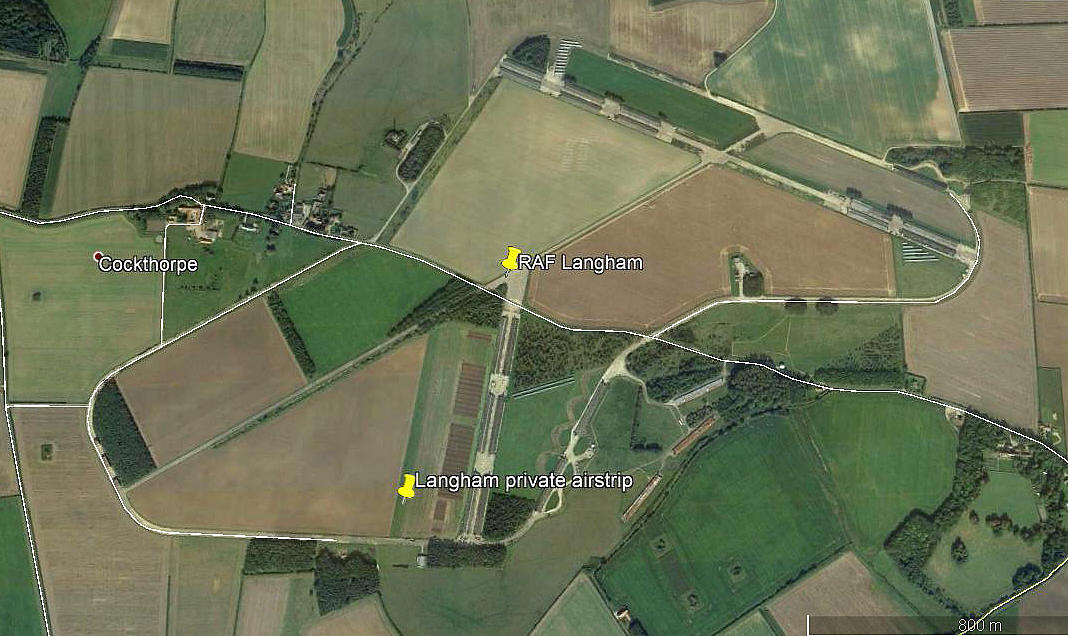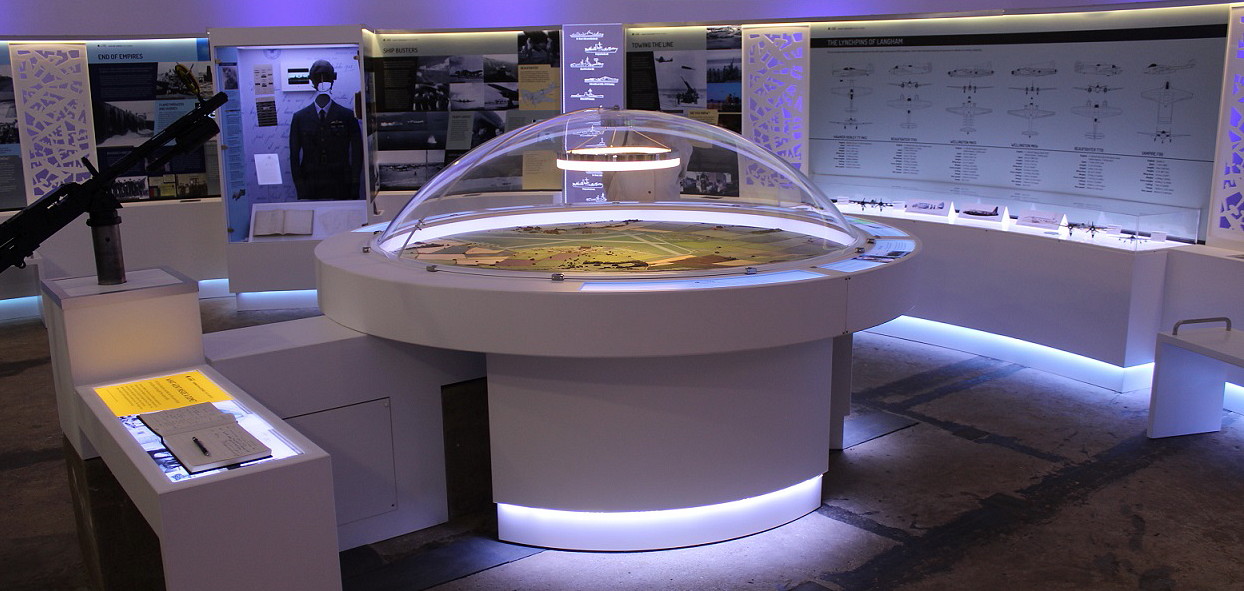Langham
LANGHAM: Military aerodrome later private airstrip attached
Note: These pictures above (2017) were obtained from Google Earth ©
Note: Pictures by the author unless specified.
Military users: WW2: RAF Coastal Command 16 (GR) Group
521 Sqdn (Lockheed Hudsons and Hawker Hurricanes)
524 Sqdn (Vickers Wellingtons)
455 (RAAF) & 489 (RNZAF) Sqdns (Bristol Beaufighters)
280 (ASR) Sqdn (Vickers Warwicks)
No.1 AACU (Anti-Aircraft Co-operation Unit) (Hawker Henleys)
Post WW2: No.2 Civilian Anti-Aircraft Co-operation Unit* (de Havilland Vampires)
Royal Netherlands School of Technical Traing
Civil airstrip operated by: 1980s to - : H Labouchere Esq
Location: SE of Stiffkey & Cockthorpe villages, NW of Langham village, 5nm NW of Holt
Period of operation: Military 1940 to 1958 Civil airstrip: from 1980s to -
Runways: WW2: 02/20 1280x46 hard 07/25 1829x46 hard
12/30 1280x46 hard
The 10/28 runway in 2000 was previously a taxiway and the 02/20 grass strip was at the SW end of the disused military aerodrome. The runways layout in 2000 applied in 1990 it seems
2000: 02/20 550x18 grass 07/25 1000x10 hard
10/28 700x15 hard
2017: 01/19 490 grass
NOTES: The Beaufighters of 455 (RAAF) and 489 (RNZAF) squadrons formed the second strike wing specifically tasked in late 1942 to attack enemy shipping prior to the invasion of Europe which was of course the D-Day landings in June 1944. These two squadrons had become operational at Leuchars (FIFE) but after presumably becoming effective at Leuchars they were quickly moved here. As mentioned many times elsewhere it was standard RAF practice in WW2 to quickly move a squadron well away once they had become operationally effective and familiar with local flying conditions.
To quote from Britain’s Greatest Aircraft by Robert Jackson: “Their hunting ground was mainly off the Dutch coast, and sometimes the Langham Wing joined up with the North Coates Wing to form a strike force of up to fifty Beaufighters.”
*It appears the Spitfire Mk.XVIe TE311, now flying with the Battle of Britain Memorial Flight, served the No.2 Civilian Anti-Aircraft Co-operation Unit, then based here, between January and February 1953. You might well wonder at the mindset of those who arranged this very brief tenure. The two AACUs were operated by the military from 1941 to 1952 and from 1952 to 1958 the operation was transferred to Marshall of Cambridge.
THE LANGHAM DOME
This unusual half spherical building, situated on the southern edge of the aerodrome, was apparently used for training anti-aircraft crews and for many years languished in a state of disrepair. It has recently been converted into a fabulous visitor centre, in a most imaginative way - and is a credit to all concerned. Even the picnic tables have information displays on their table tops covered in a weatherproof laminate - yet another imaginative feature of the site.
william newstead
This comment was written on: 2019-07-29 14:39:36I was born in the second cottage on the Langham road at Cockthorpe,some 50 yards from the perimeter track and recall events from 1940 onward when I was three years old.As a small child I witnessed so many events too numerous to mention here.
We'd love to hear from you, so please scroll down to leave a comment!
Leave a comment ...
Copyright (c) UK Airfield Guide


























